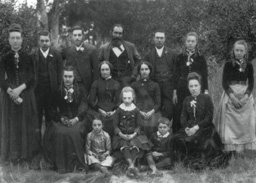JACH Submissions
JACH invites submissions from anyone who is researching Australian colonial history. In particular we invite postgraduates and honours students to submit their research for our consideration. Though JACH is designed specifically as an outlet for academic writers, we welcome contributions from the general public.
All submissions are first considered by an editorial committee, and may at that stage be returned to the author with recommendations for improvement. With the approval of the editorial committee, the submission is double-blind refereed. We endeavour to return the referees reports to the author within twelve (12) weeks of receiving the submission.
Referees are asked to comment on a draft article, and place it into one of the following categories:
a. publishable without amendment
b. publishable with minor amendment
c. publishable with major amendment (re-refereeing required)
d. unpublishable.
In the case of category (c), the revised manuscript will be re-submitted to the referee/s in order to determine whether the requested improvements have been made. The Editor may, on his/her discretion, modify the demands of the referee, or request a report from a third referee.
Article submission
There are 2 options to submit your article:
- Post three (3) hardcopies to JACH, School of Humanities, Arts and Social Sciences, University of New England, Armidale, 2351. Please include an email address, where possible, so we can acknowledge receipt of your submission.
- Email the editor with your submission attached.
Style guide
Layout
- Double spacing, 12 point.
- Footnotes numbered consecutively and at the bottom of the page.
- Length 5,000–8000 words (not including references), though we will consider longer and shorter pieces.
- No subheadings.
- No Bibliography required.
Traditional form of documentation
- Initials, surname, full title (with the capitalisation of the original) place and date of publication in first citation.
- Italicise titles of books, journals and ibid., and op. cit.
- Single inverted commas for journal titles.
- Subsequent references after first citation, Ibid., if immediately following, author's surname and op.cit., if not a consecutive reference. See following examples.
Examples
Journal articles
C. Twomey, '"Without Natural Protectors": Responses to Wife Desertion in Gold-Rush Victoria', Australian Historical Studies, Vol. 28, No. 108, April 1997, p. 22 (or for a multiple page reference, pp. 23–24).
Published books
G.R. Elton, The Practice of History, Glasgow, 1967, p. 22 (or for a multiple page reference, pp. 23–24).
An edited collection
M. Anderson, 'Marriage and Children in Western Australia', in P. Grimshaw, C. McConville and Ellen McEwen (eds) Families in Colonial Australia, Sydney, 1985, p. 55. No comma after the parenthesis.
More than one publication by same author
First citations for each as above. After the first full citation for each, then author's surname or in the case of consecutive citations, use ibid.
Miscellaneous
- Date format example: 1 January 1901.
- No apostrophe when stating a year, for example, 'As Australian colonisation expanded in the 1840s ...' (not 1840's).
- Italicise names of ships, newspapers, foreign words and phrases.
- Numbers written in full to about twenty, numerals there after.
- Abbreviations: A full stop if the last letter of the abbreviation is not the last letter of the word, for example, ed. for editor, or if abbreviating 'editors', use eds (with no full stop).
- Titles of books and articles: Follow the capitalisation of the original except if the original is all capitals in which case apply the normal rules for capitalisation.


